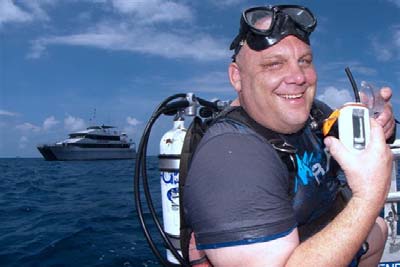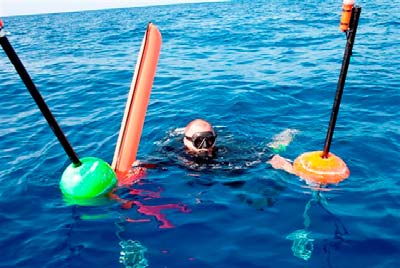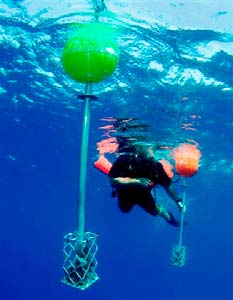Mike Ball Dive Expeditions case study - Managing the quick recovery of drifting divers
Organisation
Mike Ball Dive Expeditions (MBDE) has been operating in Queensland since 1969 offering extended diving trips for certificated divers.
The dive sites visited are often more than 160 kilometres off the Cairns coastline, in remote locations or involve deep and technical diving.
Safety initiatives
Due to the type of diving experiences and remote locations offered there is also an increased risk of 'missing diver' events caused by drifting. Dive sites suited to experienced divers are often associated with strong currents that may cause divers to drift away from the vessel after surfacing from a dive.
Divers that drift away from the vessel are at risk of drowning, dehydration, hypothermia and marine animal injuries.
Traditionally divers in these situations have resorted to signalling the dive vessel with safety sausages and whistles. The risk is that these safety devices are not always effective and can be missed in choppy water, at longer distances or go unheard in strong wind.
MBDE has implemented two innovative dive safety systems to aid in the quick recovery of divers who have drifted away from the vessel to better control the risk of losing a diver.
Each diver is provided with a Marine Rescue Radio (MRR) with GPS which allows VHF radio communications between surfaced divers and the dive vessel. Divers can use a voice communication mode or a distress mode which digitally transmits their location using GPS.
Testing has demonstrated the MRRs reliability and effectiveness and divers have been successfully recovered using this system. MBDE has worked with both manufacturers and suppliers to ensure that the MRRs are cost effective and robust enough to withstand the marine environment.

MBDE has also developed a Lost Diver Buoy (LDB) system. The LDB is a simple device which assists in predicting a search area based on water current and wind direction. The buoy is designed to drift in a similar manner to a diver at the surface, indicating where a diver may have drifted in the prevailing conditions.

If a diver fails to return after a dive the buoy is deployed at their last known location and tracked to give an indicative bearing and rate of drift to aid the subsequent search. Several LDBs are available so that buoys can be used at the last known location and at the diver's predicted location.

The LDB system is a relatively cheap and simple method of tracking local drift conditions. This is particularly useful in the 'confused seas' often experienced in diving remote isolated reef systems. LDBs have been used to assist in searches where the data provided has led to an early and successful outcome.
Outcomes and benefits
Missing divers represent one of the greatest concerns for dive businesses offering unguided certificated diver experiences. By implementing these safety initiatives, MBDE has demonstrably minimised the risks to divers by providing ways to locate and recover missing divers quickly. In an industry where business reputation is important, this initiative helps identify MBDE as a leader in customer safety.
By consulting with the vessel crew in the development and implementation phases of these initiatives, the dive crew's confidence in the solution has also increased.
Detailed explanation and demonstration of the MRRs is provided to customers about how and when to use the devices. This is now a routine feature of all dive briefings.
The crew also undertakes missing diver drills where the LDBs are deployed and tracked for training purposes.
These systems form part of MBDE's Safe SCUBA System, a safety management system that emphasises incident prevention through:
- environmental and customer assessment
- supervision and monitoring
- training and advice.
Case study contact
Craig Stephen
Operations Manager
Ph: 07 4053 0503
Email: cstephen@mikeball.com
Acknowledgements
Workplace Health and Safety Queensland would like to acknowledge the following resources in the development of this case study:
- Photos courtesy of Aaron Smith and MBDE
- LDB system originally conceived and developed by Captain Trevor Jackson and MBDE